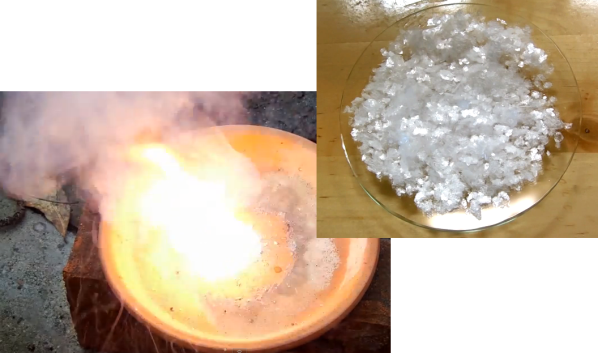To the upper right we have very pure potassium chlorate, so much so that it bursts into flames when mixed with sugar and catalyzed with some sulfuric acid. [Mr. Home Scientist] produced the KClO3 using household chemicals and some rudimentary equipment sourced on eBay.
The experiment started off with concentrated bleach containing 8.25% sodium hypochlorite. He needed sodium chlorate so a hot plate was used to boil the bleach until crystals started to form. A more efficient way to achieve this reaction would be using electrolysis (check out the HHO generator we saw recently for a homemade rig). The next step is to add potassium chloride, which is sourced from the grocery store as a sodium-free salt alternative. After mixing with the filtered remains of the bleach reaction the two are combined. There is no precipitate from this — an indication that not everything is as it should be. But an overnight stay in the refrigerator results in the potassium chlorate crystals seen above.
Fiery testing (seen below) lets him know the experiment worked. From here the product can be used for things like making solid rocket engines.
Continue reading “Potassium Chlorate From Household Products”













